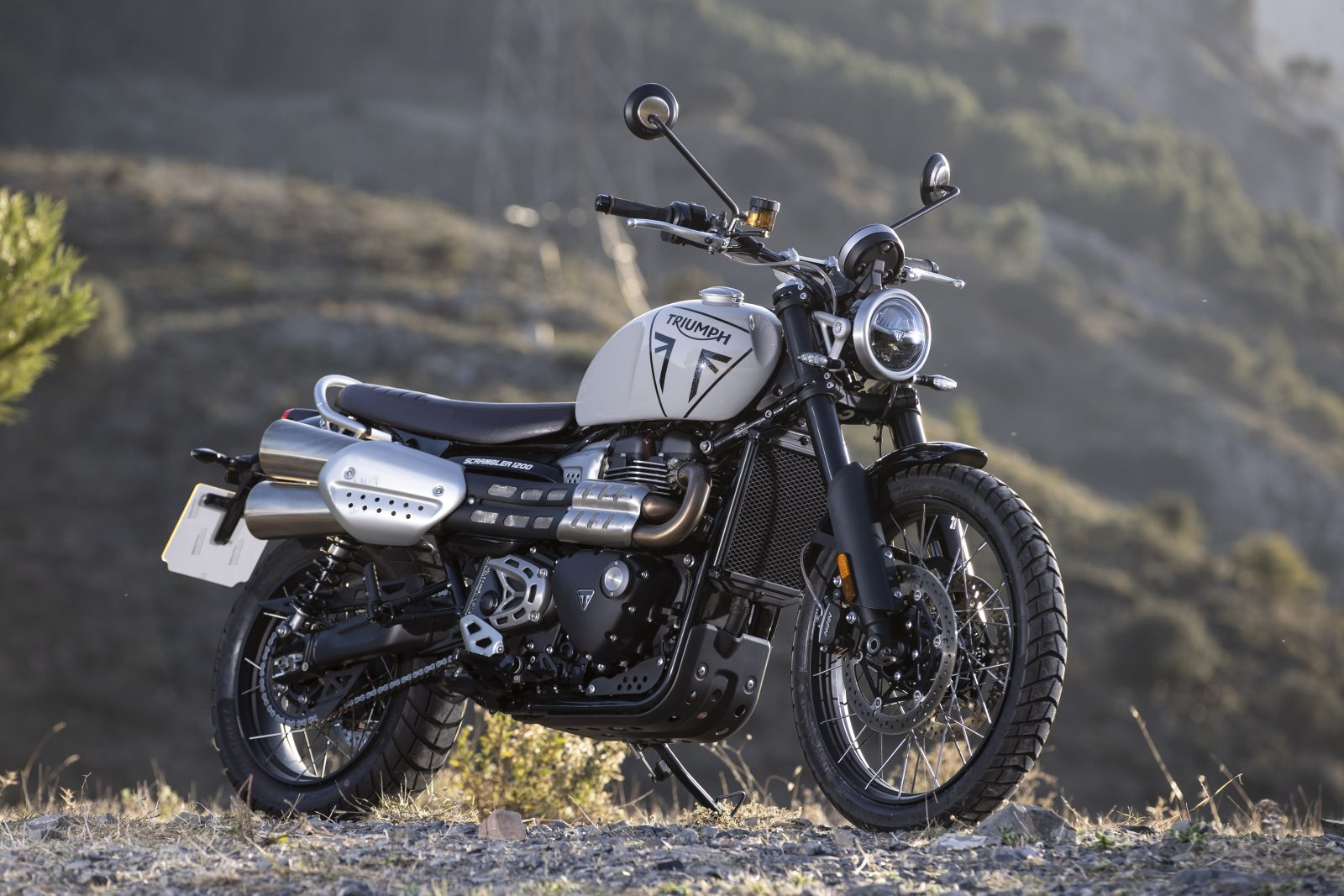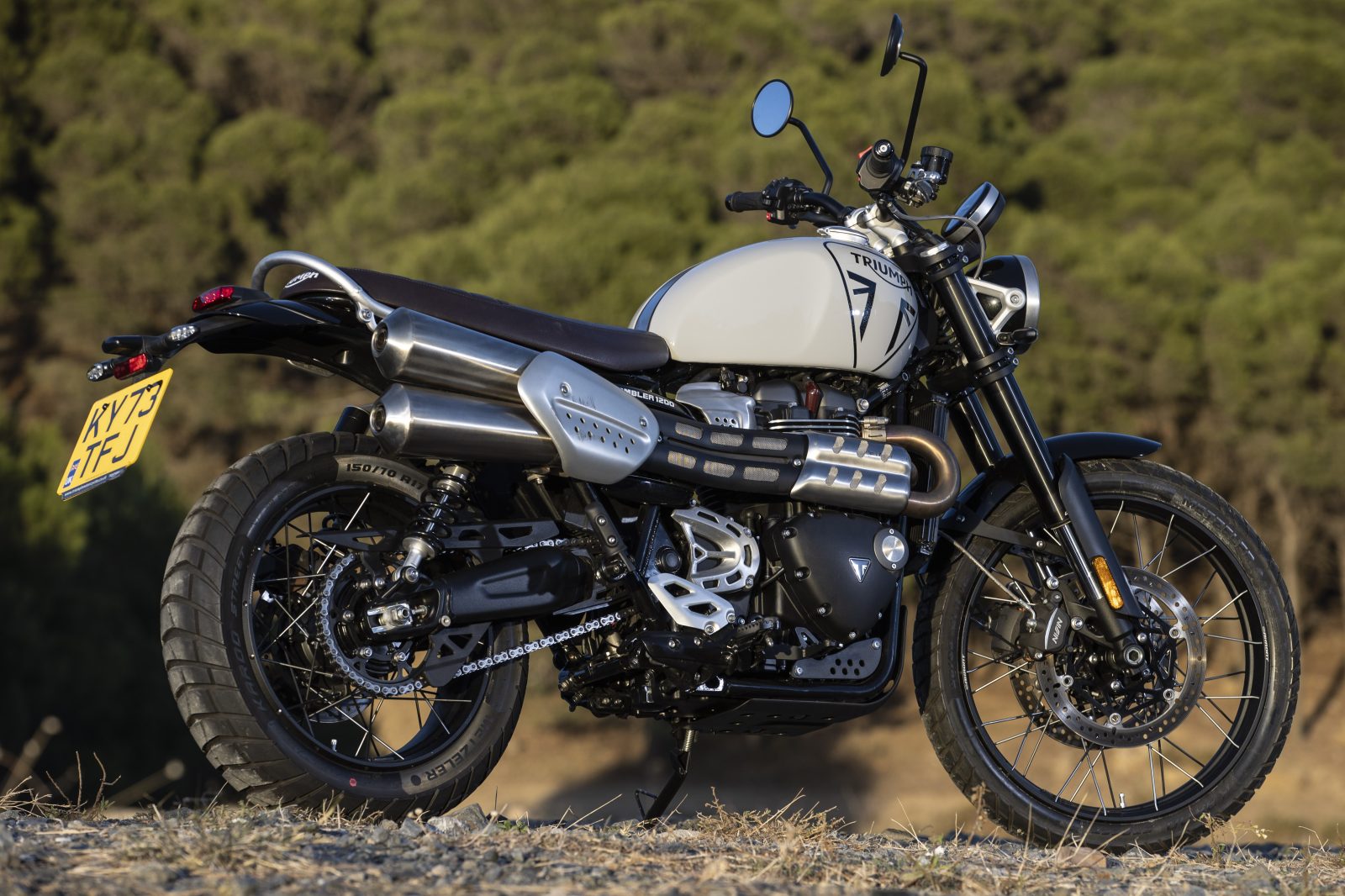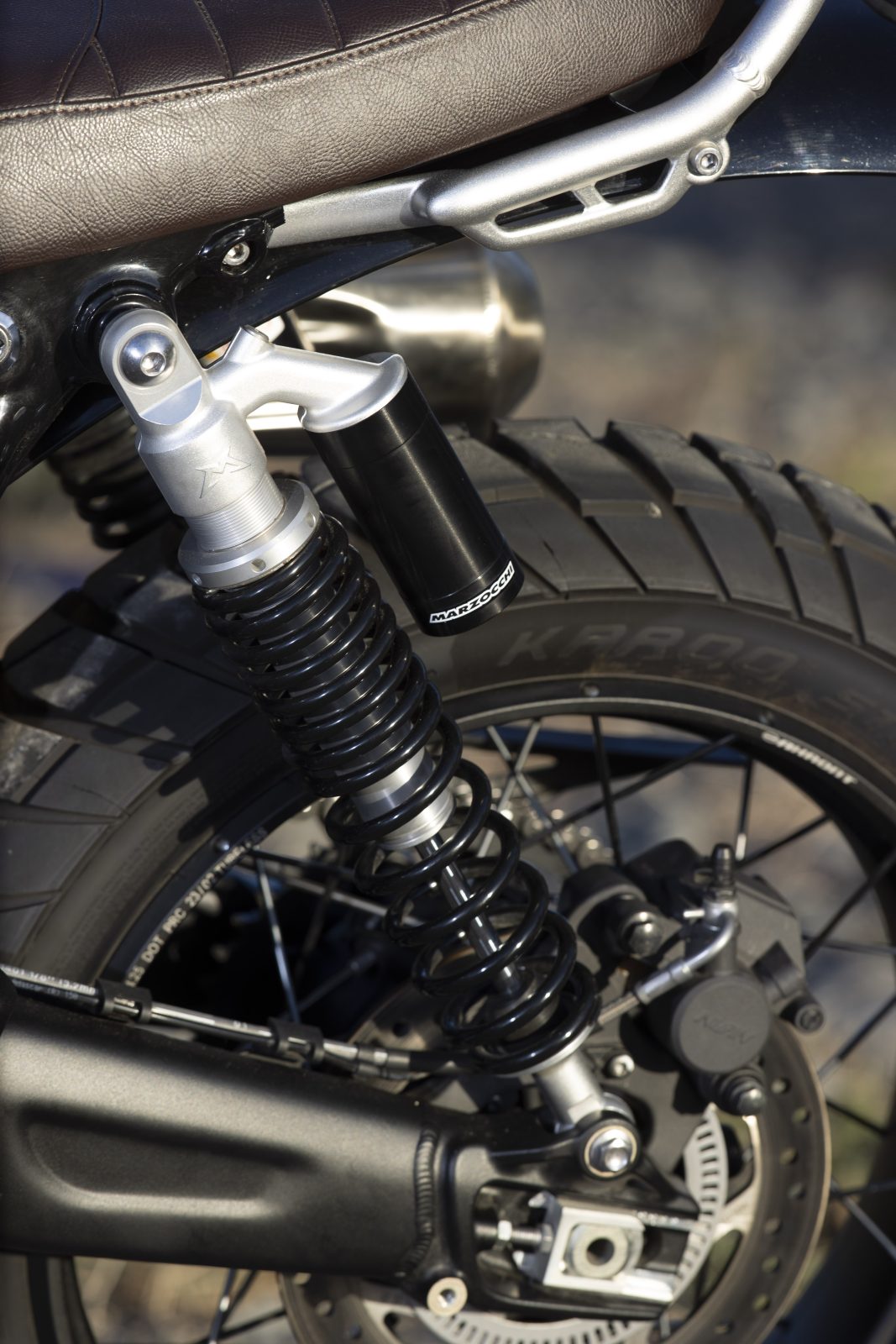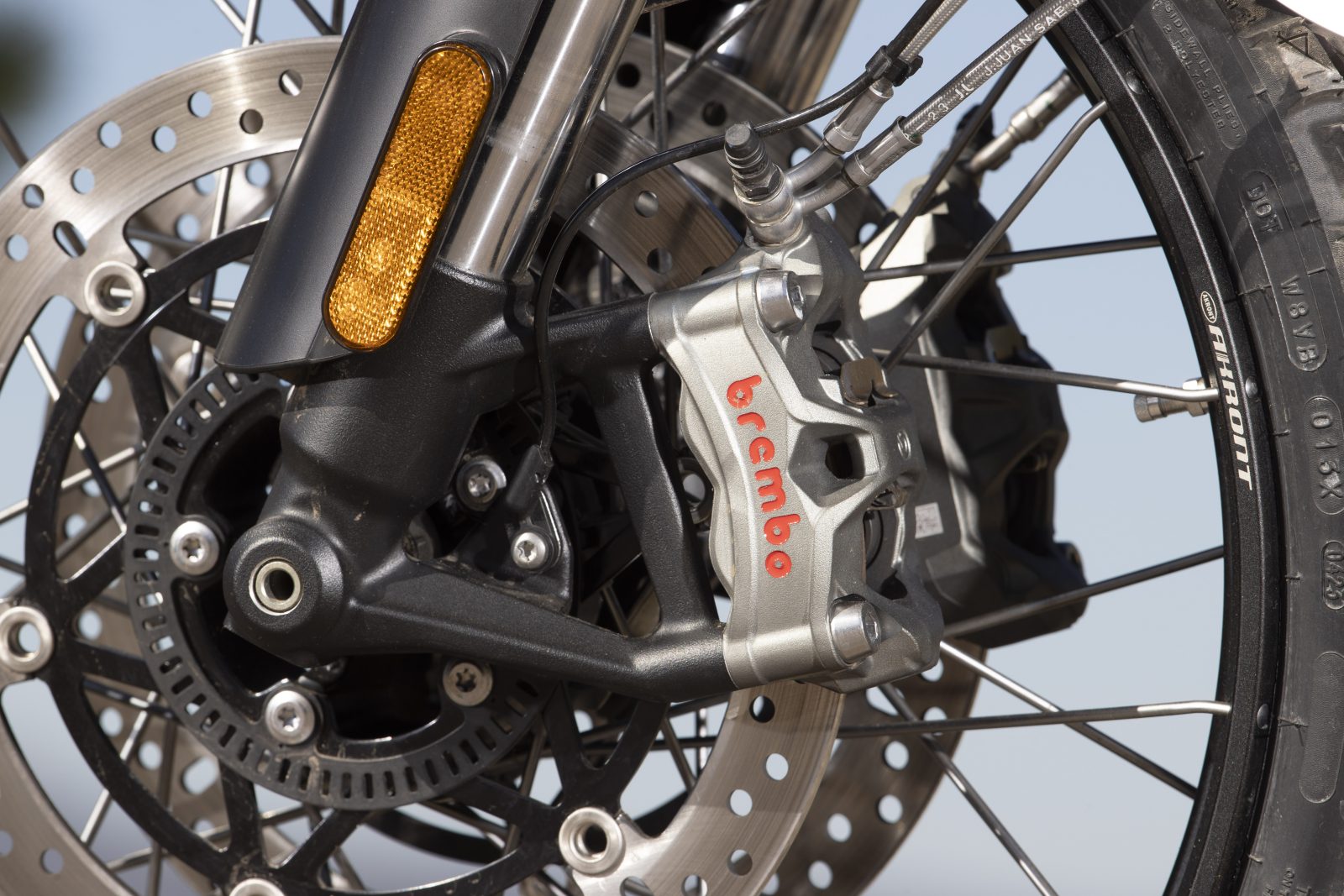Lower spec, lower seat height and less expensive, the latest Triumph Scrambler 1200 X is now more things to more people.
You either get the Triumph Scrambler 1200 or you don’t. You either appreciate its uncompromising, slightly old-fashioned approach to its role as a dual-purpose retro bruiser, or you find its daunting seat height and lack of adventure-bike comforts and sophistication too much to contemplate, especially on dirt. You love the retro looks and Scrambler styling or you are perturbed by its weight and lack of tech.
Triumph appears to have recognised this fact because the new and significantly reconsidered 2024 Scrambler 1200 X is the Hinckley factory’s olive branch to those who find themselves drawn to the Scrambler’s unquestionable charisma and charm while being slightly intimidated by its size and bulk too. Don’t worry, I was.
With shorter-stroke suspension and a lower seat height, the 1200 X is more accessible and easier to live with day-to-day. With $1490 sliced off its price tag, at $22,600 it’s considerably cheaper than the Scrambler 1200 XC it replaces too.

I’m guessing many will question why Triumph has replaced the older model’s Brembo M50 brakes, Showa fork and piggyback Öhlins rear shocks with less aspirational Nissin stoppers and Marzocchi suspension units front and back, but the 1200 X is about giving more riders access to the Scrambler franchise. A lower seat, a better price plus an electronic upgrade that drops lean-sensitive ABS and traction control on to the table, point to a more road-focused package and a clear distinction from the XE.
The more off-road biased Scrambler 1200 XE continues unabashed (see sidebar), as tall and ballsy and up for a day in the dirt/sand as ever, and also receives a raft of updates, many of them shared with the X. Crucially, though, the differences between the two 1200 offerings are now much clearer. To sum up, the X is the Scrambler for everyone.
Engine wise, both 2024 models use Triumph’s liquid-cooled, 1200cc parallel-twin engine. Peak power and torque of 66.2kW (89hp) and 110Nm are unchanged, but those peaks now arrive 250rpm earlier than before at 7000rpm and 4250rpm. There’s a new, single 50mm throttle body, revised exhaust headers to broaden the spread of torque and a new heat shield arrangement for the high-level exhaust to help reduce the temperature around the rider’s right leg.

That electronics refresh brings cornering traction control and ABS for the first time on the base model, and five riding modes: Sport, Road, Rain, Off-Road and Rider Configurable. AMCN enjoyed perfect autumn weather conditions on test, which, on asphalt at least, allowed me to toggle exclusively between Road and Sport modes. There isn’t an enormous step in performance or throttle response between the two. Whichever you choose, the X responds smoothly and immediately, pulling strongly from just above tickover, before stomping through its wonderful midrange and delivering more than enough zip at the top-end.
Without riding the old XC and new X back-to-back, it’s not immediately obvious that more torque is on tap in the lower rpm range, but the new bike, like the old, is overflowing with big-Bonnie grunt. Short shifting becomes the norm on any ride and I barely revved the X beyond 5500rpm as there’s simply no need. Peak power is at 7000rpm but you can make brisk progress using a maximum of just 5000rpm.
Binding all this meaty goodness together is the same steel-cradle frame used in both the outgoing XC and updated XE, but with entirely new suspension, which is the big transformation for 2024. In place of the XC’s fully adjustable 45mm Showa USD fork and Öhlins piggyback rear shocks come Marzocchi units, front and rear. The fork diameter remains at 45mm but they are non-adjustable, while the rear shocks get spring preload adjustment only, whereas both were fully adjustable previously. Both the fork and shocks have reduced strokes, with travel shortened from the XC’s 200mm at each end to just 170mm.

Fork is non-adjustable Marzocchi
As soon as you settle on the 1200 X’s bench seat you feel the difference. Seat height drops from the XC’s 840mm to 820mm and is considerably lower than the new XE’s 870mm. With an optional even-lower seat you can reduce that figure to 795mm. At 170cm, just, I am one of those riders who’s always been daunted by the 1200 Scramblers but Triumph has drastically changed all that by shortening the suspension travel, meaning I no longer have to plan where I’m going to stop in fear of not being able to touch the road.
Obviously, the Marzocchi name may not woo some riders as much as the departing Öhlins goodies, but the Italian suspension specialist manufactures quality goods and, in terms of real-world performance, there is little lost.
On the intense twists and turns in the roads of Malaga in Spain, I never once felt the need to stop the bike and change the suspension settings. The pace was brisk, the roads flowing, and the feedback and support were spot-on for a bike with a 21-inch diameter front wheel. In fact, with its travel reduced 30mm, the suspension is better matched to the road, certainly less of a road/dirt compromise than the older XC is.

Front and rear suspension have reduced stroke compared to the earlier 1200 XC, and it’s better suited to on-road riding
However, ground clearance has been reduced, meaning the ’pegs do tickle the road on occasion. Heavier riders who ride hard will need added preload if they want any ’pegs remaining after a fast ride chasing sportsbikes.
While cornering ABS adds more security and reassurance to the rider, there is no hiding the fact that the 1200 X has reduced braking power compared to the previous model, with smaller 310mm diameter discs (down from 320mm) and axial-mount Nissin calipers instead of the radial-mount Brembos M50s of the XC. On instances, when braking hard into tight downhill hairpins, the usual, gentle brush of the lever with one or two fingers wasn’t enough. Instead, a firm three-finger pull was required to get the X stopped. Heavier riders or those who ride two-up will notice the reduction further.
One welcome update, however, comes in the form of a single, circular dash. It’s simple and easy to navigate, with optional Bluetooth connectivity – although the USB port is under the seat, which is a hassle. Given their size, I’m really not sure why manufacturers continue to do this. Another gripe is Triumph has decided to ditch cruise control on the X. It really should be included on any big-bore adventure tourer.

Given the road-biased Metzeler Karoo Street tyres fitted to the 1200 X, I don’t think Triumph was too pleased that I took the new Scrambler for an unofficial off-road test. But so long as you’re not intending to hit the trails hard, or jump and bounce over rocks, then the 1200 X is still capable of riding in the bush.
With the traction control deactivated, the X’s accurate fueling, balance and accessible torque made it easy to slide the rear without inviting disaster. (Should you get a little carried away, the ABS is designed to work off-road.) However, do remember, despite now appealing to shorter riders, it’s still a heavy motorcycle when ridden off road – at 228kg it’s not a lightweight Scrambler, as the name suggests. If you get stuck in the sand you might need a mate to help you out.
Triumph has re-classified its big Scramblers for 2024. There is now a more clear and better understood gap between the two versions, appealing to two different sets of riders.
By decreasing the spec and being realistic about their customers’ needs, Triumph has made the 1200 X easier to ride than the XC, which should widen its appeal to riders of all sizes and experiences who want a neo-retro adventure bike.
Triumph’s Scrambler 1200 X has balanced, softly set, road-focused suspension that remains stable and planted when pushed. The power delivery is charmingly punchy and there’s that enhanced spread of torque to power it past cars and out of turns. Its economy is good and service intervals are at 16,000km, meaning long-term running costs should be reasonable.
What’s the top-spec XE like?
THE 1200 XE and the new 1200 X version get a new 50mm single throttle body, reprofiled exhaust headers and revised engine mapping, which shift maximum power and torque down by 250rpm while leaving the peaks the same. The off-road-biased XE also receives an additional mode, Off-road pro.
Like the 1200 X, suspension is new for the XE. A Showa fork and twin Öhlins shocks have been replaced by similar Marzocchi units, still fully adjustable and still with 250mm of suspension travel. Suspension may have dropped in spec but stopping power has been increased to Brembo Stylema radial four-pots in place of the previous Brembo M50s.
Style changes are minimal; just tweaks like the reduced size indicators and rear tail light. Overall, the level of finish is very high and in the Spanish sunlight the new Baja Orange looked absolutely stunning.

The new 1200 X now caters to those who like the idea and image of the 1200 XE but are either put off by its size or don’t require significant off-road ability.
The new 1200 XE is very different from the 1200 X and is clearly the big boy of the 1200 Scrambler range. Big ground clearance, big suspension travel, big seat height… and it has Brembo Stylema stoppers.
It looks stunning and it’s surprising what you can get away with riding it both on and off road. It’s a fun, useable, versatile bike, and something a little different from a normal adventure machine – but still heavy.
Test Adam Child + Photography Chippy Wood
SPECIFICATIONS
ENGINE
Capacity 1200cc
Type parallel twin, DOHC, four valves per cylinder
Bore & stroke 97 x 80mm
Compression ratio 11.1:1
Cooling Liquid
Fueling EFI, 50mm throttle body
Transmission Six-speed
Clutch Wet, multi-plate
Final drive Chain
PERFORMANCE
Power 66.2kW (89hp) @ 7000rpm (claimed)
Torque 110Nm @ 4250rpm (claimed)
Top speed 210km/h (est)
Fuel consumption 4.6L/100km (measured)
ELECTRONICS
Type Not given
Rider aids Cornering ABS and traction control
Rider modes Sport, Road, Rain, Off-Road and Rider Configurable
CHASSIS
Frame material Steel
Frame type Cradle
Rake 26.2°
Trail 125mm
Wheelbase 1525mm
SUSPENSION
Type Marzocchi
Front: 45mm upside-down fork,
non-adjustable, 170mm travel
Rear: Twin rear shocks, adjustable preload,
170mm travel
WHEELS & BRAKES
Wheels Wire-spoked aluminium
Front: 21 x 2.15 Rear: 17 x 4.25
Tyres Metzeler Karoo Street
Front: 100/90-19
Rear: 150/70-17
Brakes Nissin, cornering ABS
Front: Twin 310mm disc,
twin-piston caliper
Rear: Single 255mm disc,
single-piston caliper
DIMENSIONS
Weight 228kg (wet, claimed)
Seat height 855mm
Width 834mm
Height 1185mm
Length Not given
Ground clearance 185mm
Fuel capacity 15L
SERVICING & WARRANTY
Servicing First: 1000km
Minor: 16,000km
Major: 32,000km
Warranty Two years,
unlimited kilometres
BUSINESS END
Price $22,600 (ride away)
Colour options Ash grey, Carnival red or
Sapphire black
CONTACT
www.triumphmotorcycles.com.au
THE COMPETITION
